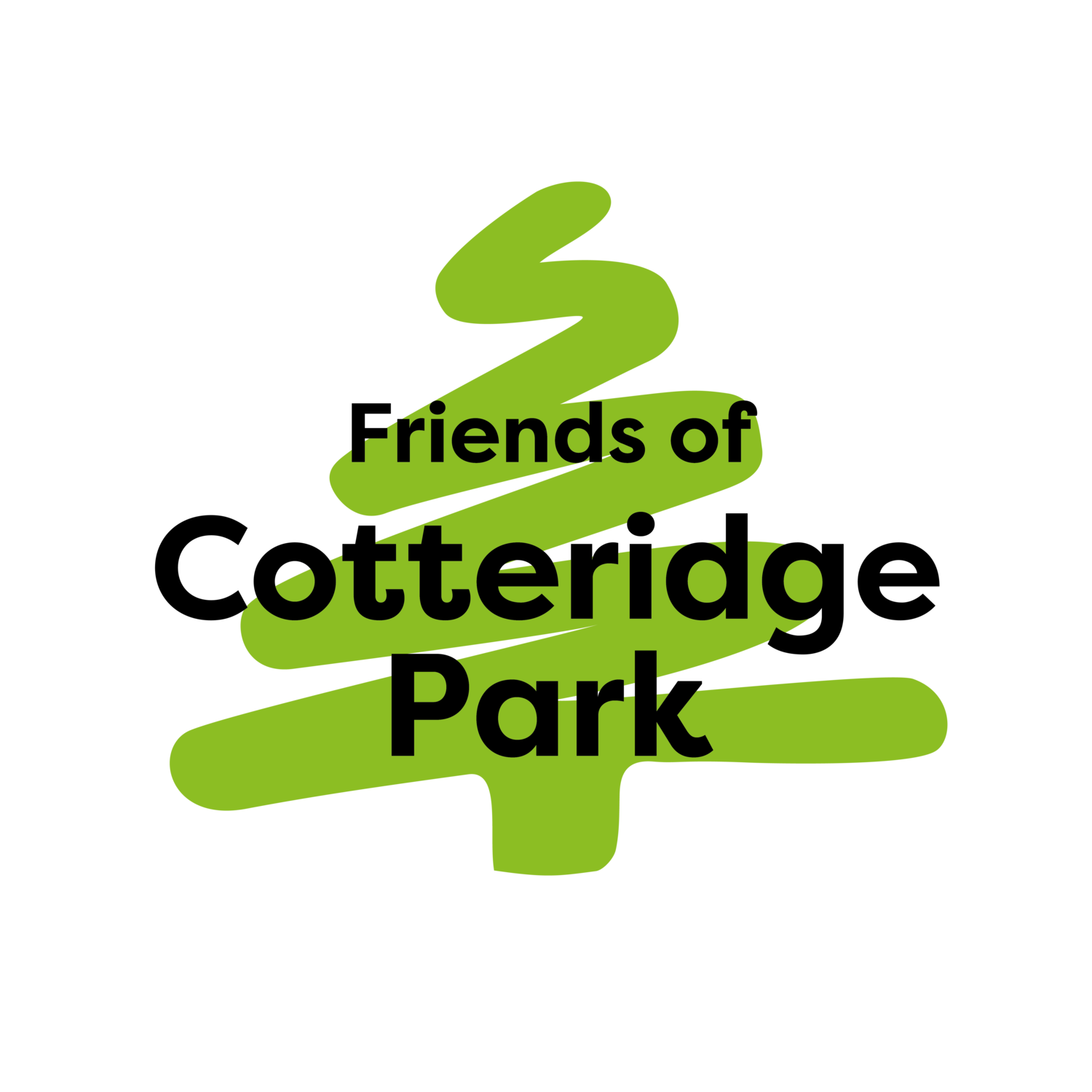What’s in the park?
Here you will find a selection of what’s in the park, from special trees of interest to buildings and glacial erratics.
We’ve set out the information in three parts;
Creativity & imagination - there’s more to the park than its trees and the swings
Built - The shed, playground & skatepark, tennis and basketball courts, ping pong table
Trees & naturally occurring - arboretum, jubilee & coronation trees, community orchard, millennium wood, wigloo, dinosaur pond
Please read on, or click to see a map of the park with some of this information overlaid.
What’s here: creativity & imagination
Cotteridge Park has a resident poet. Around the park (and in The Shed) you’ll find poems by Mr Blue. Read some of the poems on our Poetry page.
There is so much to do in your local park for FREE - here’s a map with some ideas.
What’s here: built
The Shed
Welcome to The Shed, our new community building in Cotteridge Park. Staffed by volunteers, it’s the base for all the activities that go on in the park. And it’s the best place to go to find out what’s going on. It also has toilets, hot drinks and somewhere to sit down. New volunteers are always welcome.
Playground
& Skatepark
The children’s playground is maintained by Birmingham City Council and any problems can be sent to them.
Our small skate park is great for beginners - whether it’s for skateboarding, bikes or scooters.
Tennis and
basketball courts
The courts are free to use on a first come first served basis. Three times a week they are booked for classes:
walking netball and tai chi. (See our What’s on page for info.)
The courts are maintained by Birmingham City Council and any problems can be sent to them.
Ping pong table
Free to use on a first come first served basis.
Bats and balls are available at The Shed
What’s here: Trees & natural matter in the park
Arboretum
Each side of the path that goes from the car park entrance to The Shed, is a selection of specimen trees. Some were planted when the park was new in 1910 and some when the arboretum was refurbished, with support from the Heritage Fund in 2018.
Click here for a map with details about these trees.
Jubilee and
Coronation trees
Trees were planted in the park to commemorate the coronation of George VI in 1937 and the Queen’s Diamond Jubilee in 2012. Click here for a map with more details about these trees.
Bernard the owl
Say hello to Bernard the Owl - created by Sue Swatridge.
He keeps a watchful eye over the park.
Cotteridge Community Orchard
The land between the railway line and the park has been transformed from a wasteland to a community orchard. Home to more than 25 fruit trees, it’s a quiet haven in the middle of the city. The land, previously allotments for British Rail staff, was bought with lots of small donations from local residents and funding from the Co-op in 2006. Since then the fruit trees have been added and a garden created.
Millennium
wood
Millennium Woodlands were planted across the UK in the year 2000. Cotteridge Park was home to one of the ones for South Birmingham. Children from local schools and community groups planted 1500 whips (very small trees). 20 years later we have a wonderful woodland - home to a variety of native British tree species and all the small mammals, birds, insects and plants that follow when a new woodland is planted. It’s also home to lots of our forest school activities.
Glacial erratics
Cotteridge Park has a wonderful array of glacial erratics (boulders to the rest of us). These rocks arrived in the park during the first or second ice age - about 400,000 years ago.
They were brought here on a glacier as it moved from the Arenig Mountains in North Wales. They were dug up when the park was laid out in the early 20th century and local geology enthusiasts ensured that they were studied and displayed. Read more about this on our Heritage page.
Wigloo (Willow Igloo)
The willow tunnels and domes were planted in the 90s and have been added to over the years. They are a living playground that just keeps growing. In the spring the catkins arrive and the leaves start to open. In the summer the tunnels are a secret hiding place - ideal for hide and seek. And in the winter they become a beautiful barren sculpture.
The wigloo takes a lot of pruning and weaving every year,
you are always welcome to join the gardening volunteers.
Dinosaur pond
Once upon a time (1916 OS map) this area was laid out with paths, beds and trees. The paths have since gone, which might explain why the area floods sometimes. Due to the flooding and floating trees, we gave it the name of the dinosaur pond and it’s stuck. When the water drains away there are stepping stones.














